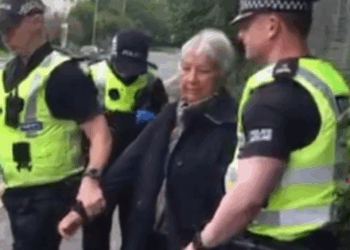Cllr Richard Roberts is the Leader of the Conservative Group on Hertfordshire County Council.
The results of the county elections in May were sobering for Conservatives across the country. Longstanding Conservative strongholds fell, with Reform UK capitalising on frustration amongst many of our traditional supporters. Their message, fronted by Nigel Farage, resonated with voters who wanted to once again “send a message”. The outcome was a clear reminder: many loyal Conservatives have not yet forgiven us, and their votes went elsewhere.
In Hertfordshire, the picture was mixed. Holding 22 seats out of 78, the Conservative Group performed better than many of our colleagues elsewhere. Yet this still represented a halving of our representation, while the Liberal Democrats, on a near-identical share of the vote, secured 32 seats and emerged as the largest party. They now lead a minority administration, dependent on the tacit support of Labour and the Greens.
This coalition of the Left is fragile. Hertfordshire politics, like the national scene, has polarised. On one side stand Conservatives and Reform; on the other, Labour, the Liberal Democrats, and the Greens. In the medium term, tensions within Hertfordshire’s coalition of the Left are inevitable. The Liberal Democrats have the most to lose; the Greens, the most to gain. Labour, for now, is little more than a passenger.
Yet in the short term, the Liberal Democrats face a difficult governing challenge. Their first hundred days have been tentative and quiet. On national television, they promised to “fix the roads” and “fix SEND.” Neither has received additional investment. Meanwhile, they have chosen to abandon County Hall and spent an additional £4 million, while rolling forward much of the Conservative administration’s programme. Their’s is a cautious, almost managerial approach — a “Ming vase strategy” — careful not to drop what has been handed to them, but too timid to set out a bold new direction.
Their difficulties will only grow. With no overall majority, no formal coalition partners, and a worsening financial outlook, the Liberal Democrats have limited room for manoeuvre. A further £90 million of savings will be required within three years, following the £100 million we achieved in the last three. The loss of grant (£50m) through the so-called “Fair Funding” review, together with the consequences of national tax increases and borrowing missteps, places additional strain on Hertfordshire’s finances. There is already palpable unease about what the delayed Autumn budget will bring. The question is whether the Liberal Democrats will attempt to defer difficult decisions into the long process of local government reform — or whether they will face up to the task of governing.
The contrast with the previous Conservative administration remains clear. Between 2022 and 2024, Hertfordshire was recognised as one of the best-performing county councils in the country. Schools achieved above-average outcomes, with over 90 per cent rated good or outstanding. Social care was strengthened, with significant investment in SEND. More houses were built than in the previous two decades, libraries and recycling centres remained open, and decisive action was taken against illegal vape shops. Our commitment to holding county elections — ensuring that local government reform was subject to a democratic mandate — was a principled stand, and the right one.
Crucially, Hertfordshire’s achievements were delivered in a climate of fiscal discipline. We reduced the workforce while protecting frontline services. We demonstrated that it was possible to balance budgets responsibly while investing in areas that matter most to residents. At a time when public trust in politicians is fragile, delivering competence and value for money is not a luxury. It is essential.
That is why the current Liberal Democrat administration looks so tentative. Lacking both a majority and a clear governing philosophy, they risk becoming a caretaker council — waiting for the eventual move towards unitary government while doing little to address today’s challenges. They will talk often of consensus and consultation, but residents will rightly ask: where is the delivery? Where is the ambition? Hertfordshire deserves more than drift.
The lesson for Conservatives is not to despair, but to rebuild. Voters did not abandon us because they preferred the policies of our opponents. The message was clear – “we want change”. In Hertfordshire, as nationally, Reform UK’s appeal lay not in detailed programmes but in the sense that they were unafraid to say what others avoided. We should not dismiss that. But nor should we mistake anger for a governing plan. When elections come round again — for county or for unitary authority — voters will look not just for rhetoric, but for competence.
Conservatives must be ready to show that we remain the party of delivery. In Hertfordshire that means pointing to our record but also offering a clear forward plan: investing in children and their education, protecting social care and our precious Green Belt, prioritising infrastructure as well as the environment and ensuring value for money for every taxpayer pound. At national level, it means re-committing to growth, stability, and aspiration, supporting families and — the principles that have always underpinned Conservative success.
The coalition of the left in Hertfordshire is unlikely to survive the full electoral cycle. Internal tensions, financial pressures, and the looming question of local government reform will expose the fault lines soon enough. Before that happens, the question hangs: will the Liberal Democrats be able to push all the difficult decisions into the great Local Government Reform sausage machine or will they have to take tough strategic decisions? Either way it will be a difficult and bumpy ride.


![Scott Bessent Explains The Big Picture Everyone is Missing During the Shutdown [WATCH]](https://www.right2024.com/wp-content/uploads/2025/11/Scott-Bessent-Explains-The-Big-Picture-Everyone-is-Missing-During-350x250.jpg)













